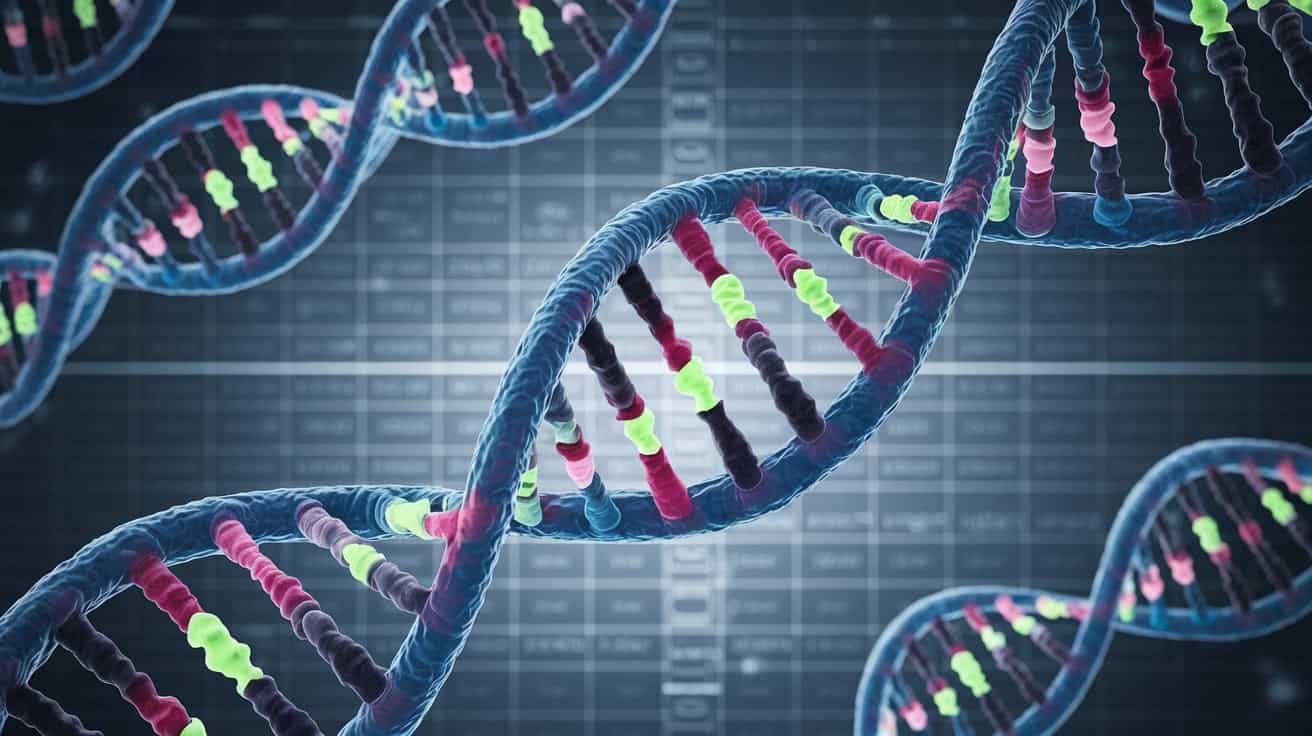If you’ve ever stared at your chromosome browser wondering what those colorful segments actually mean, you’re not alone.
I recently watched an enlightening webinar from Johnny Pearl, the creator of DNA Painter, and I’m excited to share some valuable insights about DNA segments and how they can enhance your genealogical research.
Below are just my notes. I high encourage you to watch this free webinar.
Understanding DNA Segments
At their core, DNA segments are continuous pieces of genetic code that tell part of your ancestry story.
Think of them as pieces of a family puzzle – each one containing information about where it came from and who might share it with you.
One of the most useful aspects of DNA segments for genealogical research is how they can help narrow down which ancestral line they came from.
Here’s a simple example: when you and a first cousin share a DNA segment, that piece of DNA had to come through your shared grandparents.
But it gets even more specific – that segment actually came from just one of your shared grandparents, not both. This pattern helps us trace which ancestors passed down specific pieces of our DNA.
The Various Types of DNA Segments
Your genetic inheritance is more complex than it might first appear. Let’s explore the different types of segments you might encounter:
Half-identical Regions
These are the most common type you’ll see in your DNA results. They occur when you match someone on just one copy of a chromosome. Most of your DNA matches will share half-identical regions with you.
Fully Identical Regions
These primarily appear when comparing DNA with full siblings. In these cases, you match on both copies of the chromosome in the same location.
Currently, GEDmatch is the only testing site where you can distinguish between half-identical and fully identical regions.
Ancestral Segments
These represent the actual DNA pieces you inherited from specific ancestors. They’re created by crossovers (also called recombination points) during DNA inheritance. Think of them as interlocking puzzle pieces that make up your complete genetic picture.
The Importance of Segment Size
When analyzing DNA segments, size plays a crucial role in determining significance. Smaller segments (around 4-5 centimorgans) can sometimes be “pseudo-segments” – genetic coincidences that don’t necessarily indicate a recent common ancestor.
Consider this practical example from the webinar: A researcher found they matched someone at 4 centimorgans who was supposedly a third cousin once removed.
However, when checking against random matches of the same size, they found similar patterns – suggesting this small segment wasn’t genealogically significant.
I personally don’t look at any matches below 20cm.
Accessing Your Segment Data
The landscape of DNA segment data accessibility has changed over the years. Here’s where you currently stand:
- AncestryDNA: Does not provide segment data
- 23andMe: No longer provides segment data
- Family Tree DNA: Offers segment data and bulk download
- GEDmatch: Provides comprehensive segment data
- LivingDNA: Offers segment data
- MyHeritage: Provides segment data (bulk download removed in late 2023)
A Remarkable Case Study
One of the most compelling examples shared in the webinar involved two first cousins and three of their great-grandparents who had tested. This unique situation allowed for precise tracking of segment inheritance.
The analysis showed that every segment these cousins shared could be traced to a specific great-grandparent. This real-world example demonstrates how segment inheritance follows predictable patterns, even if we usually can’t see them so clearly.
Practical Applications for Your Research
While most of us don’t have access to great-grandparents’ DNA, we can still apply these principles to our research. Here’s how:
Working with Known Cousins
When you identify segments shared with known cousins, you can begin narrowing down which ancestral line they came from. This becomes particularly powerful when combined with traditional genealogical research.
Using Triangulation
When multiple matches share the same segment and you can identify their common ancestor, you’ve found a valuable piece of evidence about that segment’s origin.
Chromosome Mapping
Tools like DNA Painter allow you to visualize and track these segments, building a clearer picture of your genetic inheritance over time.
Understanding Match Patterns
It’s important to maintain realistic expectations about segment matching. While you might identify where a particular segment originated, this doesn’t automatically mean you can identify all matches who share that segment.
Some segments have been passed down through many more generations than your paper trail can follow – sometimes 10, 15, or even 20 generations back. For the most productive research, focus on matches where you have both:
- Significant shared DNA
- Some documentary evidence suggesting a connection
Getting Started
If you’re interested in exploring segment analysis, DNA Painter offers a free tier that’s perfect for beginners. The platform allows you to visualize your segments and track their inheritance patterns.
For those ready to dive deeper, the full webinar is available in Legacy Family Tree Webinars’ free section. It offers detailed examples and step-by-step guidance for working with segments.
Additional Resources
For those interested in learning more about DNA segments and chromosome mapping:
- DNA Painter’s Learning Center
- Legacy Family Tree Webinars’ DNA course collection
- International Society of Genetic Genealogy Wiki
Legacy Family Tree Webinars has been pioneering online genealogy education for over a decade. Their platform offers top-quality sessions for genealogists of all skill levels, accessible from the comfort of your home. Whether you’re just starting out or looking to advance your skills, their extensive library of webinars provides valuable insights into family history research techniques and DNA analysis.



Ancestry not only fails to provide segment data but now you must pay to see matches matches.
I know it’s so frustrating!